Share this page
Your guide to recently released books, CDs and other teaching resources.
For additional reviews of French-language resources, visit Pour parler profession. With the exception of some classroom sets, items reviewed are available on loan from the Margaret Wilson Library at the College. Contact us at 416-961-8800 (toll-free in Ontario 1-888-534-2222), ext 679 or email library@oct.ca.
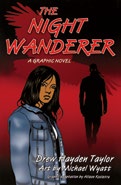
By Drew Hayden Taylor
The Night Wanderer is the story of two very different people searching for who they are and how they fit in the world. Tiffany Hunter is an Anishnaabe (Ojibwe) teenager living on the Otter Lake Reserve with her father and grandmother. Her mom is living with a white man in the city, her friends are angry with her and her dad has rented out her room to a boarder, the mysterious Pierre L’Errant. When her boyfriend breaks up with her, Tiffany rushes out to the bush, wanting nothing other than to end her pain and die.
Three hundred years ago, L’Errant had travelled to France with white men who had visited his village. Expecting adventure, he was put on display for the entertainment of the Europeans. Soon, he contracted the measles. On his deathbed, he was turned into a vampire when a man came through his window and exchanged blood with him. After years of misery, L’Errant decides to come home to Canada.
L’Errant finds Tiffany, contemplating suicide. He tells her his story, to convince her that what she has — people who care about her and a home where her people have always lived — is precious. It works; Tiffany goes home. And L’Errant, accompanied by a few sacred items, ends his existence as he wishes — watching the sun come up, at home.
The Night Wanderer began as a play, was expanded into a novel, and was adapted into a graphic novel. Michael Wyatt’s illustrations for the graphic novel are rich in tone, and his spare use of the colour red lends an eerie hue to the character of L’Errant. While most of the book focuses on Tiffany and L’Errant, Taylor manages to inject a great deal of the Anishnaabe language and culture into the story. Suggested for ages 12 and older, several themes can be discussed in a novel study of The Night Wanderer — home and family, coming of age, Native lore, trust, race relations, suicide awareness and language, among others.
Terri Lawrence-Tayler, OCT, is an anatomy and physiology instructor with the nursing program at St. Clair College in Windsor.
The Night Wanderer: A Native Gothic Novel, Annick Press, Toronto, 2007, softcover, ISBN 978-1-55451-099-3, softcover, 228 pages, $12.95, annickpress.com
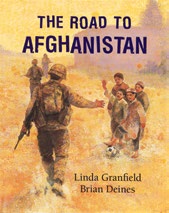
By Linda Granfield
Illustrated by Brian Deines
As a self-confessed history junkie, Linda Granfield takes on difficult historical topics and makes them accessible for young people. The harsh realities of war are explored in her latest book. Written in the first person, it is the story of three generations of Canadian soldiers from the same family participating in three different wars. Granfield includes the realities of war: rats in trenches, severe injuries, bugs in uniforms, and some of the direct and indirect consequences of war. At the same time, she infuses the story with hope, the importance of resilience and the power of family. The descriptive language is simple and direct. For instance, in telling the story of John William Peterson, a soldier in World War I, she writes: “He went home to Alberta without one of his arms.”
The picture book format makes the story highly accessible. While the chronology of the story shifts around from World War I to World War II and then to the mission in Afghanistan, the narrative remains clear. Using soft, de-saturated colours in the cemetery and battlefields scenes, the illustrator creates emotive pictures that amplify the storyline.
This is a very apt book to enhance teaching of complex issues about war and Remembrance Day, and perhaps prompting your students to start asking hard and deep questions about war. Depending on the student body, teachers will need to be attuned to sensitivities around the topic of war. The Road to Afghanistan is suitable for read-aloud in junior grades.
Cindy Matthews recently retired as a vice-principal with the Waterloo Regional District School Board and is currently an AQ instructor at Queen’s University.
The Road to Afghanistan, North Winds Press, an imprint of Scholastic Canada Ltd., 2013, Markham, softcover, ISBN 978-1-4431-1356-4, 32 pages, $19.99, www.scholastic.ca
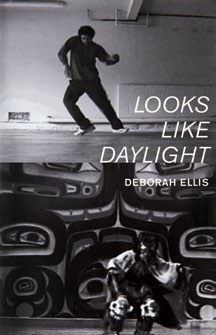
By Deborah Ellis
Author and activist Deborah Ellis criss-crossed the continent to interview 45 Aboriginal children and adolescents. She wanted to hear what they had to say. Their stories, direct, raw and unadorned, invite the reader to understand the devastating impact of historical decisions made by governments over the last 400 years on them and on the lives of their families. They talk about the legacy of residential schools, their broken homes, alcohol and other substance abuse, physical and sexual violence; about racism, the high rate of suicides and suicide attempts; about dropping out of school and their feelings of shame and anger. They share how learning about their culture, language and history, and becoming mentors to younger community members, is helping them heal their wounded spirits by engaging in activities that build their confidence and give them the courage they need to lead their communities forward.
We find out how Waasekom uses the seven teachings (love, truth, wisdom, courage, humility, honesty and respect) to rehabilitate himself and his community; how Eagleson uses the art of woodcarving to help him work through the loss of his murdered uncle; and how Rose builds her confidence through a horseback-riding program. Many more stories portray how courage, vision and hope help bury the pain, overcome the challenges and break the patterns that feed despair.
This non-fiction text is a great resource for teachers of Grade 6 to support the heritage and identity strand of the social studies curriculum. Teachers can use the stories in shared reading activities to animate discussions about these topics. Similar applications for both strands of the Grade 8 history curriculum could also be developed. It will undoubtedly broaden students’ perspectives and foster greater understanding of the plight of so many First Nations communities.
Christine Johnson, OCT, is a recently retired elementary school principal from the Ottawa-Carleton District School Board.
Looks Like Daylight: Voices of Indigenous Kids, Groundwood Books, Toronto, 2013, hardcover, ISBN 978-1-55498-120-5, 252 pages, $15.95, an imprint of House of Anansi Press, groundwoodbooks.com
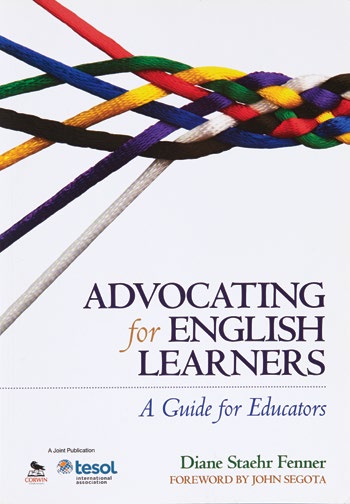
By Diane Staehr Fenner
This is the first book of its kind that I know of that focuses on developing a comprehensive plan for teachers to become the voices of K–12 English-language (EL) learners. It begins by emphasizing that all educators (both teachers and administrators) within a school community must share the responsibility of advocating for these learners. Activities to build empathy for the students are outlined, with collaboration playing a key role, not only within individual schools but among school and district administrators. Qualified staff, ongoing professional development and in-service for new teachers are just a few of the issues addressed. Later, the focus of the book shifts to interacting with the families of EL learners — how to effectively involve and make use of their skills and talents, and how to teach these families to become their own and their children’s advocates.
Program development and the importance of effective instruction within those programs are discussed, followed by a detailed analysis of fair evaluation and assessment strategies for these students. Special Education is also examined. The book concludes with a persuasive argument that it is the responsibility of all educators to ensure that EL students get the support they need to either further their education or help them with entry into meaningful employment.
For those of us who have felt helpless when faced with the many needs of EL students in our classrooms, this book is inspirational. The author encourages us to think in a positive way and highlights the attributes that these students bring to our classrooms. What benefits will his or her presence offer to other students in the class? Any teacher, general or EL, would benefit from owning this well-researched text.
Dorothea Bryant, OCT, teaches language arts at the University of Windsor’s Faculty of Education. She recently completed her TESOL (Teaching English to Speakers of Other Languages) certification and works with English learners at the high school level.
Advocating for English Learners: A Guide for Educators, Corwin Press, Thousand Oaks, CA, 2014, softcover, ISBN 978-1-4522-5769-3, 238 pages, US$34.95, corwinpress.com
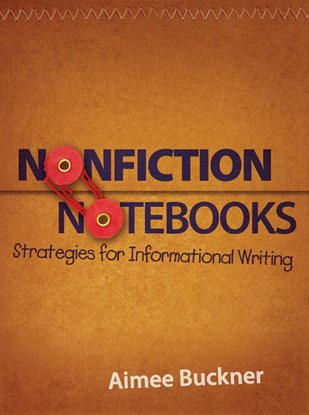
By Aimee Buckner
In her first book, Notebook Know-How, Aimee Buckner explored how teachers can use writer’s notebooks for students to practise pre-writing techniques as they begin crafting fictional writing. This new book follows the same format, with a focus on sharing strategies for informational or non-fiction writing. Filled with lesson plans and ideas for mentoring students, she teaches us how to both read and write as writers do so that their implicit lessons can be absorbed into the writing process. Best of all, she includes mentor texts to help students explore the wide range of possibilities for writing non-fiction.
Parts of this book refer to the Common Core State Standards that teachers in the United States work with, but teachers in Ontario will find many connections to our own curriculum. One of the most fascinating techniques the author introduces is her use of a summary statement for each of her strategy lessons, such as “Writers use specific nouns and active verbs to keep their informational writing interesting.” These statements could easily be turned into success criteria to help our students understand what successful writing looks like.
Teachers of students in Grades 3 and up will find this book incredibly useful. My own copy is filled with sticky notes and margin notes of things to consider when introducing non-fiction writing to students. As is fitting, Buckner’s writing style makes teaching writing seem easy. She brings the reader right into her classroom and allows us to hear her own students’ voices as they work through the draft versions of their writing.
Kerry Zinkiewich, OCT, is an instructional leadership consultant for K–8 literacy in Peterborough.
Nonfiction Notebooks: Strategies for Informational Writing, Stenhouse Publishers, Portland, ME, 2013, softcover, ISBN 978-1-57110-952-1, 128 pages, US$18.50, stenhouse.com
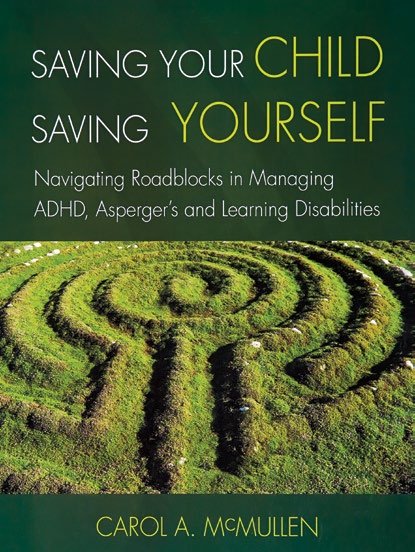
By Carol A. McMullen
This thorough and comprehensive book is a compilation of research and practice spanning more than 40 years of a professional life devoted to children with various learning disorders. McMullen shares many real-life examples, along with strategies to help cope with the daily struggles of students who fall within the range of Autism Spectrum Disorder (ASD) and those with Attention Deficit Hyperactivity Disorder (ADHD) and other learning disabilities. The case studies are highly relatable and can be quite revealing for teachers, professionals and families who are faced with the challenges these students present.
McMullen clearly and concisely shows teachers and parents how to understand the process from diagnosis through the implementation of an Individual Education Plan (IEP) as well as accommodations, strategies and support for students and adults. In addition, she covers a wide range of issues around social and communications skills that are related to learning disorders, paying particular attention to parents, siblings and friends. For older students and adults, she offers ideas for helping affected young people negotiate the university years and beyond, into the workplace. The book is valuable for teachers, parents and individuals seeking both support for and information about ADHD, autism and learning disorders.
Under the new Diagnostic and Statistical Manual of Mental Disorders, 5th Edition, used by psychologists and psychiatrists, Asperger’s is no longer referred to as a diagnosis. It is now under the umbrella of ASD. This updated information was published after McMullen’s book.
Cheryl Woolnough, OCT, is a Special Education teacher with the Peel District School Board.
Saving Your Child, Saving Yourself: Navigating Roadblocks in Managing ADHD, Asperger’s and Learning Disabilities, self-published by Carol A. McMullen, Canada, 2012, softcover, ISBN 978-0-9682673-2-5, 261 pages, $35, carolmcmullen.ca
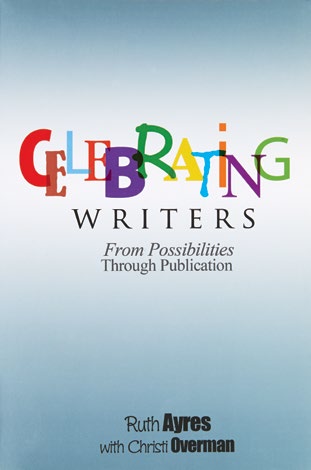
By Ruth Ayres and Christi Overman
Celebrating the final draft of a writing project is no doubt a great relief, commendable and even fun. But for many young writers, the prospect of such a celebration is not even on the horizon as they struggle with the very first moments of setting pen to paper. In this innovative book, the authors suggest a wealth of ideas to respond, reflect and rejoice throughout the writing process, not just at the end. “By helping students celebrate each stage of the writing process and applauding their successes,” they write, “we help our students persevere through what can be extended and challenging work.”
By stressing that the writer is more important than the process, they suggest that the writer be honoured throughout so that each step along the way can be celebrated, with teachers and other students acting as the writer’s cheerleaders. By discovering the smaller milestones, writers can avoid the perfection trap and be motivated to take risks. And by removing the focus from the end product, students can be encouraged to regard planning, drafting, revising, editing and refining as critical points along the journey. In other words, honour the writing process and not just the product. Celebrations can take the form of any number of events: poetry cafés, family history workshops, best-ever book celebrations and storytelling. Of special note are ideas for digital sharing, including Skype, Twitter, blogs, fi lm festivals and live streaming.
This book is a valuable resource for teachers who find that their students need incentives to complete writing projects and who, like me, tend to over-help, provide too many suggestions and practically carry the lagging writer to the finish line. It forced me to rethink what’s really important in the writing process.
Gail Lennon is a writer and reviewer with more than 35 years of teaching experience at all levels.
Celebrating Writers: From Possibilities Through Publication, Stenhouse Publishers, Portland, ME, 2013, softcover, ISBN 978- 1-57110-950-7, 90 pages, US$15, stenhouse.com

By Rosemary McCarney
On October 9, 2012, a 15-year-old girl in Pakistan was shot in the head by the Taliban simply because she wanted to go to school. Her name is Malala Yousafzai. She survived — not only survived but thrived. Months later, Malala was nominated for a Nobel Peace Prize and numerous awards and honours. As a student, author and activist, she has become an ambassador and spokesperson for the 65 million girls worldwide who are not allowed to attend school. Today, Malala’s name is synonymous with female courage and determination.
Every Day is Malala Day shines a light on the obstacles facing girls in so many parts of the world — huge obstacles such as poverty, early marriage, discrimination and violence. As the Canadian CEO of Plan International, a not-for-profit organization operating in 50 countries across Africa, Asia and the Americas, McCarney produced the book using photographs collected from her organization’s experiences improving the lives of children. The book is written in the form of letters to Malala from girls around the world, expressing their solidarity with her. Each page depicts an emotionally charged photograph chosen to make readers stop and think, such as the photo of a preteen girl in a wedding dress. Every Day is Malala Day includes a compelling excerpt from Malala’s speech to the United Nations Assembly emphasizing the powerful role that educating girls can have in creating a better world. As she says:“One child, one teacher, one book, one pen can change the world.”
This book is an excellent introduction for younger readers to human rights, violence and gender discrimination. For older readers, it is a perfect companion piece to the bestseller cowritten by Malala herself titled I am Malala. Proceeds from Every Day is Malala Day go to Plan International’s “Because I am a Girl” initiative, which includes the goal of every girl in the world receiving a minimum of nine years of quality education.
Anne Marie Landon, OCT, is a teacher with the Renfrew County Catholic District School Board.
Every Day is Malala Day, Second Story Press, Toronto, 2014, hardcover, ISBN 978-1-927583-31-9, 32 pages, $18.95, distributed in Canada by UTP, secondstorypress.ca
Photos: Matthew Liteplo